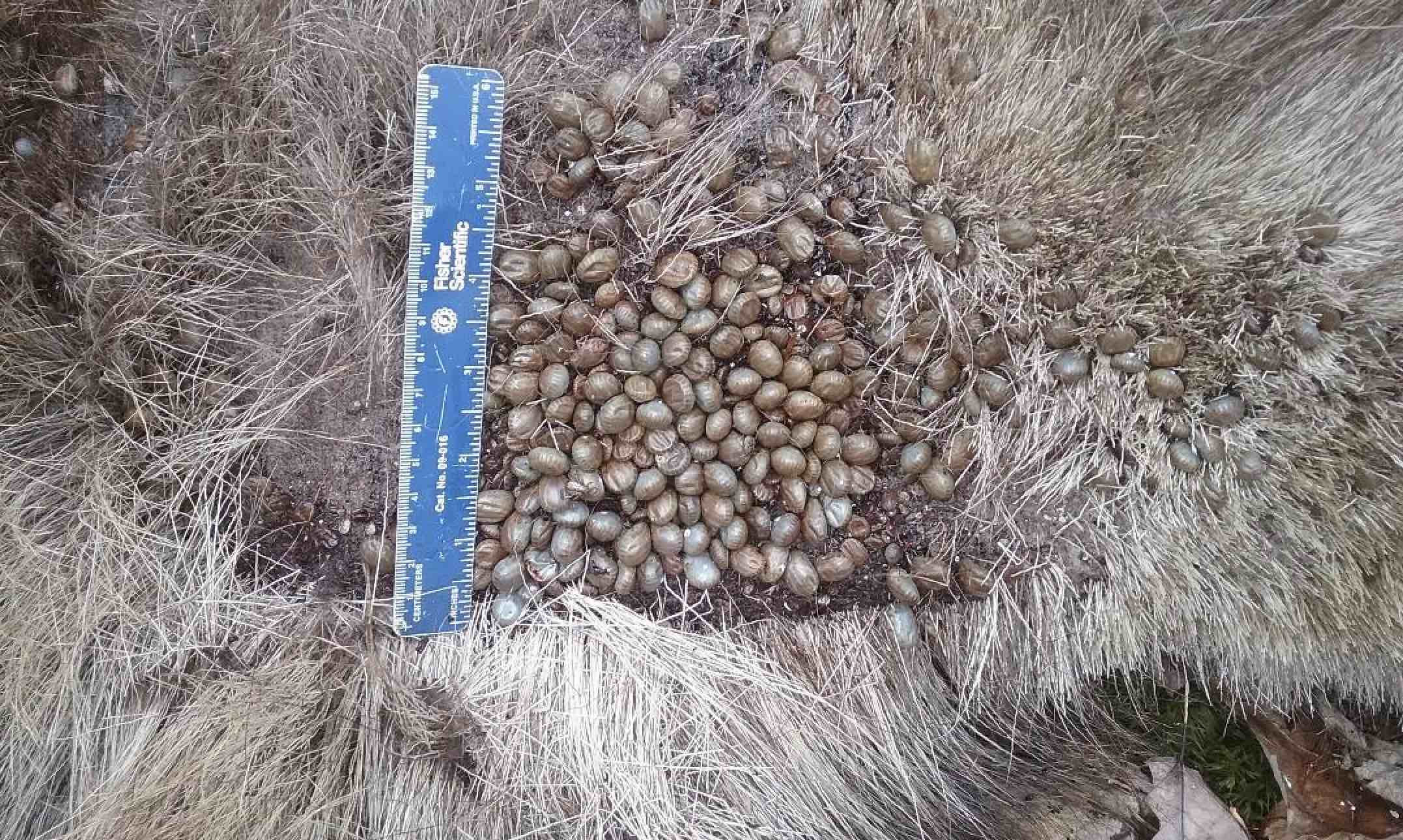By Todd Wilkinson EBS ENVIRONMENTAL COLUMNIST
Cameron Dobrotka is 1,500 miles away from the Greater
Yellowstone Ecosystem this summer, but he’s at work on something that has implications
for our region, and he believes it should be of interest to members of his
generation.
Why? Because it’s certain to become more prominent as an
issue in the decades ahead.
Dobrotka is studying certain kinds of uncharismatic
microfauna that may cause many readers here to squirm. After reading this
column, you might even feel as if one of his subjects is crawling across your
body. Warning: The description and photo that follows may be unsettling.
Young Mr. Dobrotka’s focus: ticks.
At the Yoder Lab on the campus of Wittenberg College in
Springfield, Ohio, Dobrotka is thinking about tick behavior. He’s pondering how
the proliferation of these blood-sucking, disease-spreading parasites is
occurring in an age of climate change.
The 21-year-old grew up in the Chicago suburb of Elmhurst
and he admits that neither he nor his friends paid much heed to the topic of
ticks. That changed when Dobrotka, as an undergraduate hoping to pursue a
career in medicine, became a research associate in the laboratory operated by
college professor and tick researcher Jay Yoder.
Yoder, these days, is focusing his attention on a particular
species of tick, Dermacentor albipictus, known by its more common name,
“winter tick.”
Winter ticks have emerged as a serious problem for moose in
New England and there is growing concern that habitat conditions favoring tick
survival in the boreal forest could dramatically affect moose as well as other
deer family species, including potentially, elk, deer and woodland caribou.
Ticks are members of the class Arachnida, the same one that
includes spiders.
Normally, major tick outbreaks occur in more southern climes
and, in the North, only cyclically; normally, they are hard pressed to survive
cold northern winters. But warming average temperatures have enabled more to
persevere; they become hitchhikers on moose in autumn, start sucking blood,
even reproducing on the animals, and stay there till spring. And by then the
damage is done.
Although winter ticks cause adult hosts to lose their fur
and can make them anemic, giving rise to the name “ghost moose,” they don’t
usually kill. They can have a swift lethal effect on moose calves.
According to research professor Pete Pekins at the
University of New Hampshire, who has been involved with an ongoing study in
Maine, New Hampshire and Vermont, some winters since 2014 have had 60 percent
calf moose loss due to winter ticks. Note: New England does not have wolves.
On some calf moose there were between 70,000 and 100,000
ticks per animal, sometimes many more. A baby moose will get sucked completely
dry and die into two weeks.
“We see moose as the icon of gauging the impacts of climate
change in the Northeast,” Pekins said. “Are we going to lose all of our moose?
The bigger issue is climate change and what’s happening with moose and ticks is
an indicator of what’s coming.”
Apart from the physiological impacts of winter ticks, there
are deer ticks and other species that carry and spread epizootic diseases, the
best-known being Lyme disease and, in our region, Rocky Mountain spotted fever.
The Yoder Lab is novel in that it has enabled dozens of
undergraduates to do meaningful research with a climate-change issue that isn’t
just emerging; it’s already happening. Professor Yoder says there are four tick
species in Ohio that weren’t common when he was a kid.
For Dobrotka, who plays on the lacrosse team when he’s not
putting ticks and their saliva under a microscope, climate change represented a
serious yet nearly invisible, amorphous phenomena before he got involved in
scientific investigation. He now realizes that the spread of exotic parasites
and pathogens will be something that members of his generation will have to
contend with.
What he appreciates about ticks is that although they are
small, their presence can ripple big ecological impacts, even taking down the
largest members of the deer family and potentially affecting moose at the
population level due to calf mortality.
Dobrotka’s advice to his contemporaries in GenZ: Be
prepared, not scared of nature, because danger is relative. Wear long clothes
when going into bushy areas; use bug repellents like DEET; check your body—and
your dogs— after a hike; if a tick is embedded in you, know how to remove it
and save it in a baggie; if you find a tick that is engorged with your blood,
or see a bull’s eye rash on the skin, go to a doctor immediately. Lyme and some
of the other maladies can be thwarted if treated early with antibiotics.
“Ticks are out there in the world. My view and opinion about
ticks has completely changed. They are all over the place and you never know
what kind of tick you’ll run into,” Dobrotka said. “I’m not worried about them
but they’ve made me think how I need to be aware if I’m out in the woods.”
Todd Wilkinson is the founder of Bozeman-based “Mountain Journal” and is a correspondent for “National Geographic.” He’s also the author of “Grizzlies of Pilgrim Creek” about famous Jackson Hole grizzly bear 399, which is available at mangelsen.com/grizzly.



